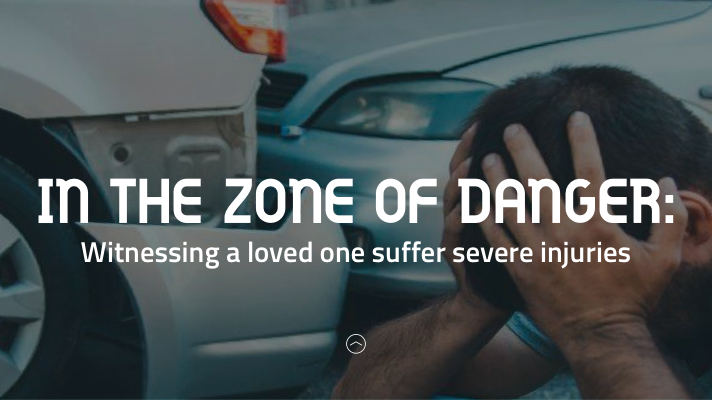Written by Christopher B. Dolan
This week’s question comes from Travis from the East Bay:
My wife of 43 years and I were crossing the street in San Francisco. She was just a few steps ahead of me when a car ran the red light and hit my wife! The vehicle struck her with such force that she became airborne before collapsing on the ground. I was stunned and horrified. She was lying there, and for a minute, I thought she might have died. She had lost consciousness and was not moving. Fortunately, she lived, but she sustained two fractured legs and a significant head injury. She had to stay in the hospital for a few weeks. I thought I had lost her. She is the love of my life, and the thought of losing her was terrifying. Watching her get hit like that was incredibly scary- I think I stopped breathing. Since then, I have become increasingly anxious and unable to sleep as the image of her getting hit is on constant replay in my mind. I’ve had to seek therapy. I know she can file a lawsuit for her injuries, but what about me?
I am so sorry this happened and that you had to witness it. It appears that you are suffering from emotional distress as a result of this incident. You certainly do have a claim for negligent infliction of emotional distress. In California, the law of Negligent Infliction of Emotional distress can flow from two different theories: Bystander Theory and Direct Victim Theory. The Bystander theory requires that the plaintiff contemporaneously observe the injury-causing event. Thing vs. Chusa (1989) 48 Cal.3d 644. The difference between the bystander and the direct victim cases is that the direct victim cases seek emotional distress damages based on the breach of the duty owed to the plaintiff that is “assumed by the Defendant or imposed on the defendant or imposed on the defendant as a matter of law that arises out of a relationship between the two.” Marlene F. v. Affiliated Psychiatric Medical Clinic, (1989) 48 Cal. 3d 583, 588, 257.
You could recover under the bystander theory. To prove negligent infliction of emotional distress as a bystander, you must show: 1) that you are closely related to the victim, 2) the defendant’s conduct negligently caused injury or death to the victim, 3) that you were present at the scene of the injury (“zone of danger”) when it occurred and were aware that the victim was being injured, and 4) as a result of the injury, you reasonably suffered severe emotional distress beyond that which would be anticipated in a disinterested witness. Dillon v. Legg (1968) 68 Cal.2d 728.
In your case, you witnessed your wife suffer life-threatening injuries as a result of the negligent driver who ran the red light. You were in the zone of danger as you were present when the collision occurred and are experiencing severe emotional distress as a result. Thus, you can recover any medical bills, bills for psychological counseling, lost wages, and pain and suffering because of the accident.
We hope you and your spouse continue to get better.










